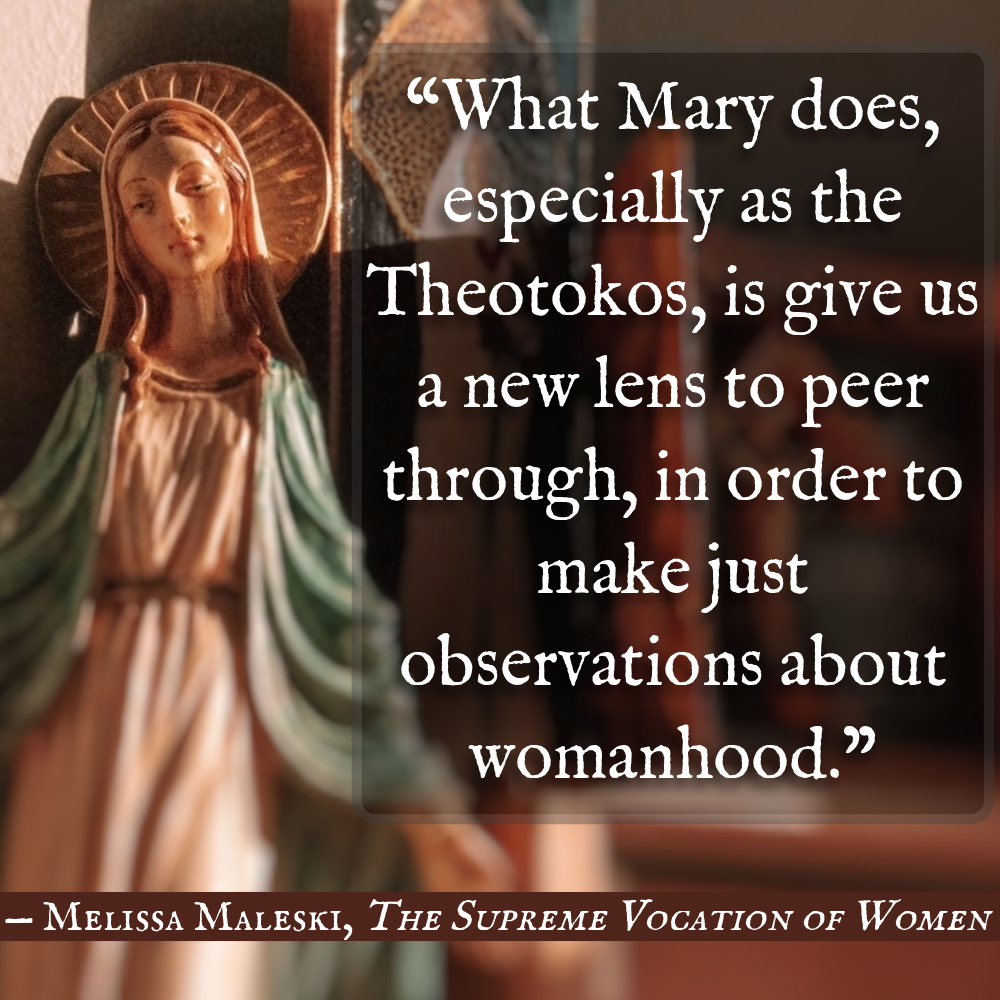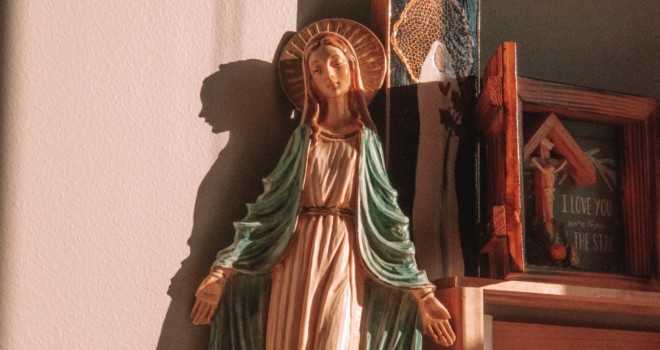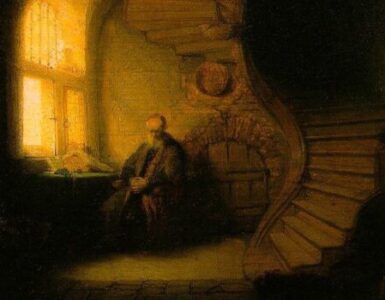A girl is born; her parents name her Mary. She grows and is betrothed to Joseph, a carpenter. Before they are married, an angel of God announces to Mary that she has been chosen to be the mother of the Messiah, the one who will bruise the head of the serpent:
Hail, full of grace, the Lord is with you!.. . Do not be afraid, Mary, for you have found favor with God. And behold, you will conceive in your womb and bear a son, and you shall call his name Jesus. He will be great, and will be called the Son of the Most High; and the Lord God will give to him the throne of his father David, and he will reign over the house of Jacob; and of his kingdom there will be no end. (Luke 1:28, 30–33)
Mary replies, “Behold, I am the handmaid of the Lord; let it be to me according to your word (Luke 1:38). With these words, she becomes the Theotokos, the Mother of God, and the first to give witness to the gospel message: Deus fit homo ut homo fieret Deus—God deigned to partake of our human nature so we may become partakers of His divine nature.
Theotokos is Mary’s most ancient title, and its strict translation is “God bearer.” Rich with literal and symbolic meaning, the Greek word became a definitive addition to the Church’s doctrinal vocabulary in A.D. 431 at the Council of Ephesus; it perfectly preserves and professes the truth about Jesus’ divine and human natures. The title also communicates profound truths about who Mary is.
As the “model of the Church in the matter of faith, charity, and perfect union with Christ,” Mary is a person with universal significance. She guides everyone in the ways of discipleship: of bearing God through faith and deeds, bringing ourselves and the world into a closer relationship with Jesus.
At the same time, the Mother of God intercedes for her adopted children (John 19:26–27), bringing all of their needs “within the radius of Christ’s messianic mission and salvific power .. . place[ing] herself between her Son and mankind in the reality of their wants, needs, and suffering” The Church also affirms that Mary embodies the “fullness of the perfection of what is characteristic of [a] woman,” (Mulieris Dignitatem, 5)

Women on both sides of the Incarnation coalesce around her; Hannah, Deborah, Jael, Ruth, Esther, Judith, and Susanna point to Mary, and the women who come after Mary draw inspiration and support from her. Here, as with her universal significance, Mary’s title of Theotokos penetrates to the deepest truths about the agency of womanhood in the divine plan.
First and foremost, the Theotokos is Eve’s antithesis. She bears God into the world rather than bringing in all that is diametrically opposed to Him: sin and death. Mary ushers in the New Covenant; in her, we “return to that ‘beginning’ in which one finds the ‘woman’ as she was intended to be in creation, and therefore in the eternal mind of God: in the bosom of the Most Holy Trinity,” (Mulieris Dignitatem, 11). But Mary does not wipe the slate clean. She does not invalidate who Eve was supposed to be or make the lives of the righteous Old Testament women—known and unknown—a wasted effort.
What Mary does, especially as the Theotokos, is give us a new lens to peer through, in order to make just observations about womanhood.
Looking back at Old Testament women—Hannah, Deborah, Jael, Ruth, Esther, Judith, and Susanna—we see that the Theotokos both confirms and perfects their prophetic feminine agency. These women of the Old Testament walk blamelessly before God; Mary is blameless from conception. Echoes of Hannah’s prayers are in Mary’s song of praise,and Elizabeth’s greeting to Mary—“blessed are you among women”—is the same one given to Judith and Jael. Comparisons like these abound, but the most striking one is the radical intimacy with which these women bear God in the world. God flows through them in ways unseen in any other person who is not God Himself.
Mary’s God-bearing is both perfectly spiritual and unabashedly literal. Her soul unites with God, and God enters the world through her, taking His human nature from hers. The relationship between God and the Old Testament prefigures the Theotokos with incredible exactness. Consider the most famous: Deborah, Esther, and Judith. Their God-bearing calls upon the totality of their person, soul and body, to bring forth the full force of God’s will.
There is no intermediary object between them, God, and what God wishes to communicate in the world: no staff, no rock, no parted waters, no plagues, no tablets. These women are the intermediary through which God directs others to Himself.
Womanhood, viewed through the lens of the Theotokos, takes on a sublime visage. It is an image that looks and sounds a lot like how John Paul II ultimately described women: as sentinels, standing at the sacred intersection where God and man meet. Eve completes the image of God in man; the Old Testament seven make good on their own prophetic words; the Word passes through Mary to become flesh and dwell among us.
The reality of the Theotokos—the reality of what womanhood is and always has been in the divine plan—leaves no doubt about the vital agency that womanhood has in the divine purpose of the human experience.
✠
This article is adapted from a chapter in Mrs. Maleski’s latest book, The Supreme Vocation of Women: According to St. John Paul II, which is available as an ebook or paperback from your local bookstore or online through Sophia Institute Press.
Photo by Maria Oswalt on Unsplash
















